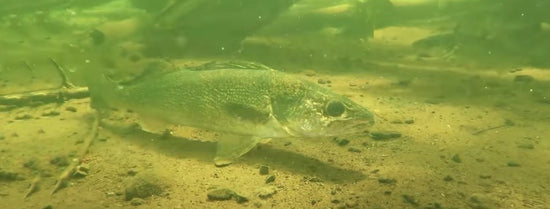How to Choose Bait Color Based on Water Clarity
When I first started fishing your lure choices were simple – spinner, worms, topwater or live bait. Now, not only are there dozens of different styles there are hundreds of different color combinations. How is the angler supposed to select the right one? The answer – match the water.
There is no doubt that the when it comes to bait colors there are far more choices than ever before. Some are variations on the traditional reds, blacks and even greens. Others such as electric blue, grape & chartreuse or tomato core look like they would be more at home at a Rave than in a tackle box. The isles of the local tackle shop look like a Crayola 64 Box was spilled, melted and mixed by a crazy person, even a seasoned angler would have a hard time deciding what is best. When you find yourself overwhelmed by flash remember it is not what you see but what the fish will see.

Bait Color 101
Color is the result of how light is reflected or emitted by an object. Different species see light, and thus color, is different spectrums so what you see is not necessarily what a fish will see. Unfortunately, this is not an easy question to answer nor is it the same for every species. It is generally believed that near shore species, those in shallower water, see a wider range of colors while those living in deeper or offshore areas see primarily black, greys & whites. Although not yet proven this theory makes sense as colors become less visible as the water deepens since light quickly dissipates in water.
So, what does this mean to anglers? It is more important to consider how your lure will look in the water, especially at increased depth, than how it looks in the tackle box. Remember that fish will be looking up, into available light so it is important that lure colors provide a good contrast against the surface.

3 Factors to Consider
When selecting a lure color or color combination you need to consider water clarity and available light. Here are some basic rules to help you make your selection:
- Clear water & bright, sunny days – go with natural, light colored lures that will closely resemble the natural baits available in a given water. In fact, selecting lures that have a color combination as close as possible to the natural bait on the water you are fishing is always best.
- Dark or dirty water & cloudy, overcast days- now you have a choice, you can go very bright or very dark (the latter often confused anglers who think the dark lure will get lost in dark conditions). Both will provide a highly visible silhouette or profile, with the brighter colors being more visible as well.
- Have go-to lures for almost any conditions – almost every lure is available in two patterns, natural and silver. Both are extremely productive in a wide range of conditions and should always be available.
Hopefully these tips will keep you from going color blind and help you make the right selection for a day of fish catching fun on the water.
Good luck, good fishing!
